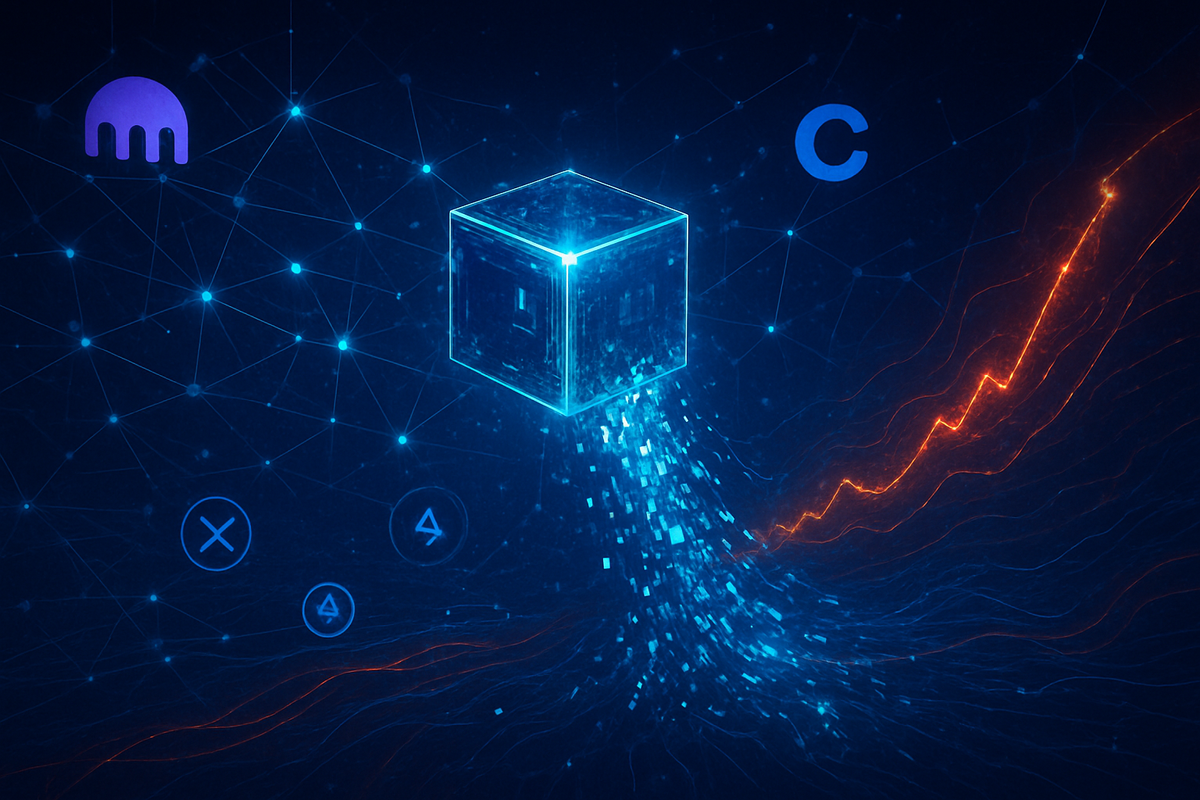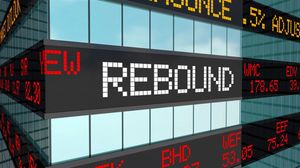
A seismic tremor has rattled the cryptocurrency world following the alleged leak of confidential documents detailing BlockDAG's (BDAG) substantial $800,000 cooperation agreement with Kraken (KRAKEN) and a Listing Framework Agreement (MOU) with Coinbase (COIN). The revelations, primarily disseminated by prominent crypto influencers, have transformed mere speculation into what many perceive as tangible pre-launch signals for the burgeoning altcoin. This unprecedented glimpse into BlockDAG's strategic maneuvers has not only sent shockwaves through the crypto community but has also significantly impacted investor sentiment, sparking a market frenzy and intensifying the spotlight on the project's future trajectory and its potential ripple effects across the broader altcoin market.
Allegations Unveiled: Inside the BlockDAG Listing Leaks
The cryptocurrency world is currently abuzz with an alleged leak surrounding BlockDAG, detailing its potential listings on major exchanges Kraken and Coinbase. This development has ignited significant market engagement and speculation, particularly given the project's confirmed Genesis Day launch on November 26, 2025.
The leaked information, prominently circulated by crypto influencers such as "Crypto Rover" and "MartiniGuyYT," outlines specific financial and strategic commitments for BlockDAG's integration with these Tier-1 exchanges. The purported "Cooperation Agreement" with Payward Inc., Kraken's parent company, reportedly details a financial commitment exceeding $800,000. This includes $300,000 USDT allocated for technical setup and integration, an additional $200,000 USDT for marketing activities, and $100,000 worth of BDAG tokens also designated for marketing. Furthermore, a $300,000 liquidity reserve is mentioned, signifying a substantial push for a robust launch. Some reports describe this as a "fully signed" document, transforming rumors into a significant pre-launch signal.
For Coinbase, the leak suggests a non-binding Memorandum of Understanding (MOU). This agreement reportedly includes the listing of BDAG/USDT and BDAG/USD trading pairs. It also hints at BlockDAG's potential inclusion in Coinbase Earn, an educational program that rewards users for learning about cryptocurrencies, and Coinbase Advanced Trading, which offers more sophisticated trading tools. Both alleged agreements reportedly include clauses restricting public statements until official confirmation from the exchanges.
The alleged leak and its ensuing market reaction are unfolding rapidly, closely preceding BlockDAG's official launch. As of October 25, 2025, the widespread discussion of these leaks is highly current. BlockDAG has a confirmed "Genesis Day" scheduled for November 26, 2025, marking the official mainnet activation, commencement of trading, and the network's full operational status. The timing of the leak just ahead of Genesis Day is seen as a critical catalyst. Prior to the leak, BlockDAG had already achieved remarkable success in its presale, raising over $430 million. Over 27 billion BDAG coins have been sold to more than 312,000 holders globally. The project is currently in Batch 31, with a special presale price of $0.0015 available via a "TGE code," contrasting with a projected launch price of $0.05.
Key players involved include BlockDAG itself, Kraken (KRAKEN), Coinbase (COIN), and crypto influencers "Crypto Rover" and "MartiniGuyYT" who were instrumental in disseminating the alleged documents. Antony Turner is identified as BlockDAG's Founder and CEO, with Dr. Maurice Herlihy on its advisory panel. While the leak has undoubtedly created a "frenzy," market reactions extend to more strategic observations. The alleged listings have shifted BlockDAG's narrative from a strong presale performer to one of the most highly anticipated upcoming listings, potentially redefining market success stories. Industry observers recognize that listings on Kraken and Coinbase would provide BlockDAG with immediate liquidity, massive visibility, and institutional access, validating the project's long-term potential.
Winners and Losers: The Market's Shifting Sands
The alleged leak concerning BlockDAG's potential Kraken (KRAKEN) deal and Coinbase (COIN) listing has significant implications for BlockDAG (BDAG) itself, and could indirectly affect other prominent altcoins like XRP (XRP) and Bittensor (TAO). While these reports remain unconfirmed, the market's reaction paints a clear picture of potential shifts in investor sentiment and capital flows.
For BlockDAG (BDAG), the wins are substantial. Listings on Tier-1 exchanges like Coinbase and Kraken would dramatically boost its credibility, perceived trustworthiness, and legitimacy, attracting a wider range of investors, including potentially institutional capital. This would lead to enhanced market share and liquidity, as millions of new users gain access to BDAG, potentially causing a significant price surge post-listing. The alleged financial commitments for marketing and liquidity provisioning in the leaked documents further support this potential influx of capital. However, BlockDAG faces risks, primarily the "buy the rumor, sell the news" phenomenon, which could lead to short-term volatility and price dips after any official announcement. Its long-term success will hinge on its ability to deliver on its technological promises (scalability, security, EVM compatibility) and attract a robust dApp ecosystem, especially given previous mainnet launch delays.
XRP (XRP), a well-established digital asset for cross-border payments, faces indirect challenges. While BlockDAG and XRP serve different primary use cases, speculative capital often rotates between promising altcoins. A successful BlockDAG launch and listing could draw some investment away from established projects like XRP, particularly from investors seeking higher growth potential in newer tokens. This capital outflow could lead to relative underperformance and affect investor sentiment towards XRP, even if its fundamentals remain strong. However, a generally bullish market sentiment spurred by BlockDAG's success could also indirectly benefit XRP by increasing overall crypto market enthusiasm.
Bittensor (TAO), a decentralized AI network, is also likely to experience indirect effects. Its unique focus on decentralized AI makes it less of a direct competitor to a general-purpose Layer 1 like BlockDAG, potentially allowing it to maintain its niche. However, similar to XRP, Bittensor could see some capital redistribution as investors chase perceived higher returns in BlockDAG if its initial market performance is explosive. If BlockDAG sees massive gains, Bittensor might appear to be underperforming in comparison, even if its core technology and adoption are progressing well. Conversely, a broad altcoin season triggered by BlockDAG's success could also uplift TAO.
The broader altcoin market could experience renewed bullish sentiment, signaling innovation and growth. This event could act as a catalyst for capital rotation, potentially fueling an "altcoin season" where funds move from Bitcoin (BTC) or older altcoins into newer, high-potential projects. However, this also introduces increased volatility across the altcoin market. The success of projects like BlockDAG, emphasizing scalability, security, and EVM compatibility, could reinforce the market's focus on projects with strong underlying technology and clear utility, setting a new benchmark for how new crypto projects are perceived and launched.
Broader Implications: Trends, Regulations, and Precedents
The alleged BlockDAG (BDAG) listing leak, even if unconfirmed, serves as a significant case study illuminating several ongoing dynamics within the cryptocurrency industry in late 2025. This event touches upon fierce Layer 1 competition, evolving presale mechanisms, and persistent regulatory and security challenges.
In terms of broader industry trends, BlockDAG's positioning as a Layer 1 blockchain aiming to solve the "Blockchain Trilemma" places it in direct competition with giants like Ethereum (ETH), Solana (SOL), Avalanche (AVAX), and Cardano (ADA). Its reported high throughput and EVM compatibility are key differentiators in this competitive landscape, where projects are vying for developer adoption and real-world utility. The presale success of BlockDAG, raising over $430 million, also highlights the evolution of presale strategies in 2025, moving towards more structured approaches, transparency, and a focus on verifiable use cases and security audits, rather than pure speculative hype.
The potential ripple effects on competitors are evident. If the Coinbase (COIN) and Kraken (KRAKEN) listings are confirmed, BlockDAG's enhanced visibility and liquidity could divert investor attention and capital from other Layer 1 projects and emerging altcoins. This could impact the trading volumes and price performance of competing projects. For exchanges, managing such leaks is crucial to maintaining market integrity, as confidentiality agreements are typically strict. While the leak might generate buzz, it also creates tension if not handled carefully.
Regulatory or policy implications for leaked information and exchange listings are significant. Unauthorized disclosure of sensitive market-moving information, such as exchange listings, can lead to unfair trading advantages and market manipulation. Regulators globally, including the SEC, are increasingly scrutinizing suspicious trading patterns related to pre-announcement spikes. A significant leak like this could prompt exchanges to review and strengthen their internal controls and non-disclosure agreements. Major exchanges like Coinbase and Kraken operate under stringent listing standards and regulatory oversight. A premature leak could jeopardize these agreements or lead to regulatory inquiries into how the information became public, underscoring the importance of robust internal security protocols.
Historically, the crypto market has seen a "Coinbase effect" or "Kraken effect," where assets experience significant price pumps following listing announcements. This has, at times, been preceded by suspicious price movements, leading to allegations of insider trading. While specific historical leaks of listing agreements resulting in regulatory action are less commonly publicized, the phenomenon of trading based on non-public listing information is a persistent concern. Past data breaches at major exchanges also highlight the broader security challenges in preventing unauthorized information disclosure. The alleged BlockDAG leak, regardless of its confirmation, underscores the delicate balance between generating market excitement and maintaining transparency and regulatory compliance in late 2025.
What Comes Next: Navigating the Post-Leak Landscape
As of October 25, 2025, BlockDAG (BDAG) stands at a critical juncture, on the cusp of its Genesis Day on November 26, 2025, amidst significant speculation fueled by the alleged exchange listing leak. The short-term and long-term future will largely depend on how the project manages these high expectations and delivers on its promises.
In the short term, leading up to and immediately after Genesis Day, BlockDAG will face increased scrutiny and pressure to deliver on the implied exchange listings. The leak has already provided an unofficial marketing boost, but BlockDAG's team must carefully manage communications to avoid setting unmeetable expectations. The speculation is driving a rush to secure presale positions before the official launch at a projected $0.05. For exchanges like Kraken (KRAKEN) and Coinbase (COIN), managing the fallout of such a leak requires careful adherence to listing policies and regulatory obligations. The broader market could see increased interest in Layer 1s and DAG-based cryptocurrencies, potentially validating the presale model for other promising projects.
Looking into the long term (post-Genesis Day and into 2026), several scenarios could unfold for BlockDAG. In an optimal "Blue Sky" scenario, if Kraken and Coinbase listings are confirmed and executed smoothly, BlockDAG could see significant price appreciation, increased liquidity, and broader institutional and retail adoption, potentially solidifying its position as a major Layer 1 contender. Conversely, a "Controlled Landing" might see listings partially confirmed or delayed, leading to healthy but not explosive price increases, requiring BlockDAG to focus on continued technical progress and community engagement. A "Hype Reversal" scenario, where listings do not materialize or are denied, could lead to a significant price correction and loss of confidence. In the worst-case "Leak Fallout" scenario, if the leak is proven to be a deceptive tactic, it could severely damage BlockDAG's credibility and lead to a price crash. Regardless, BlockDAG will need to focus on robust ecosystem development, attracting dApps, and enhancing its mining ecosystem to ensure long-term utility.
Market opportunities for BlockDAG include its strong presale momentum, technological advantage with its hybrid DAG/PoW architecture and EVM compatibility, strategic partnerships (e.g., BWT Alpine Formula 1® Team), and potential for wide adoption through its X1 Mobile Miner App and physical miners. However, challenges include managing the high expectations set by the leak, intense competition in the Layer 1 space, the technical delivery of promised speeds and scalability, security risks, and navigating the evolving regulatory landscape. Strategic adaptations for BlockDAG might involve carefully crafted communications, focusing on decentralized exchange (DEX) liquidity if CEX listings are delayed, and continuous delivery on its roadmap. For exchanges, successfully listing high-demand projects like BlockDAG brings increased volume and revenue, but also heightened regulatory scrutiny. The broader market will continue to be influenced by market cycles and the evolving global crypto regulations, shaping opportunities and challenges for all participants.
Comprehensive Wrap-up: A Market in Flux
The alleged leak surrounding BlockDAG's (BDAG) potential Kraken (KRAKEN) deal and Coinbase (COIN) listing, occurring on October 25, 2025, has underscored the profound impact that major exchange listings have on market sentiment and valuation in the crypto space. Even as speculation, this event highlights how news can rapidly shift investor attention and capital, leading to significant market movements.
A key takeaway is the potential for a "Coinbase Effect" or similar listing impact, characterized by a substantial price surge due to enhanced visibility and liquidity. For BlockDAG, such an announcement, if true, would dramatically accelerate its trajectory, bringing it to a wider audience of retail and institutional investors. However, this initial excitement is often accompanied by volatility, and the "buy the rumor, sell the news" dynamic frequently leads to price corrections post-listing.
As of late 2025, the crypto market is in a dynamic phase, with a potential bull run extending from 2024. BlockDAG's position is particularly noteworthy, having raised over $430 million in its presale and attracting a massive community through its hybrid PoW/DAG architecture and accessible mining solutions. Its Genesis Day on November 26, 2025, is a critical milestone, signifying its transition from presale to full network activation, with a projected launch price of $0.05. The project's transparency and community-building efforts, including a recent Binance (BNB) AMA, aim to build confidence ahead of this launch. Broader market catalysts include anticipated regulatory clarity in the U.S., the convergence of AI and crypto, and the emergence of real-world asset (RWA) tokenization.
The lasting impact of projects like BlockDAG will hinge on their ability to translate presale success and technological innovation into tangible utility and sustained ecosystem growth. Its hybrid architecture and EVM compatibility offer a compelling model for new Layer-1 projects. The event, regardless of its veracity, serves as a powerful reminder of the industry's susceptibility to news-driven volatility and the critical importance of robust technology and community engagement in building long-term value.
What Investors Should Watch For in Coming Months:
- For BlockDAG (BDAG):
- Genesis Day Performance (November 26, 2025): Observe network stability, transaction speeds, and actual price movement upon official launch.
- Ecosystem Development: Monitor the launch and adoption of dApps on its EVM-compatible network, indicating genuine utility.
- Exchange Listings: Beyond alleged leaks, look for concrete announcements and actual listings on major exchanges, which will significantly impact market access and price.
- For XRP (XRP):
- Ripple vs. SEC Lawsuit Outcome: The resolution of this legal battle remains the most critical determinant of XRP's price trajectory and regulatory standing.
- Institutional Adoption: Watch for Ripple's success in integrating XRP into cross-border payment solutions with financial institutions.
- Regulatory Clarity: Broader regulatory developments in the U.S. could provide momentum for XRP.
- For Bittensor (TAO):
- Network Growth and Adoption: As a decentralized AI network, TAO's value is closely tied to the expansion of its subnets, the number of active accounts, and overall network utilization.
- TAO Halving: The anticipated issuance halving in late 2025 could create scarcity and potentially drive price appreciation.
- AI Market Trends: Keep an eye on developments in the broader AI sector and successful integrations or partnerships with AI companies.
This content is intended for informational purposes only and is not financial advice





